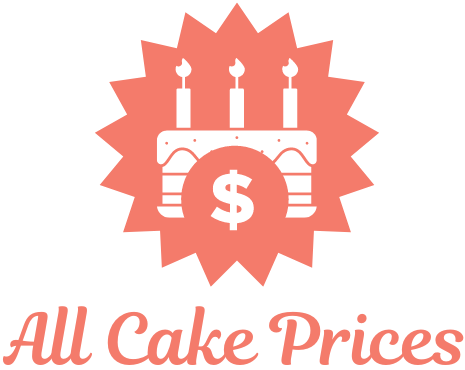Are you thinking about experimenting with different types of sugar in your baking? Good idea! However, it’s vital that you understand the different options that are available to you.
This post will show you three types of sugar that you can use. We will also give you some tips on how to use them. First, it is essential to understand the important aspects of sugar when you’re using it to bake.
Texture, Color, And Taste

The texture of sugar keeps your baked goods tender since it prevents water from hydrating the proteins present in the batter and dough. Its texture allows muffins, cookies, cakes, and other baked goods to remain moist instead of becoming rubbery.
The color also matters. When you heat sugar to its melting point, it turns into a fluid and takes on amber hues. When you bake bread or a cake, chemical reactions occur that creates the brown coloring and flavor.
Of course, the taste is the most critical part. Naturally, the sugar gives baked goods a sweeter flavor. However, it also creates new flavors. When it becomes heated, it interacts with the proteins in the batter or dough and makes different tastes depending on what type of mixture you are using.
Raw Sugar
Most people use standard granulated sugar when they are baking. However, raw sugar can also be a good option to add a new spin to your recipes.
Raw sugar—also known as turbinado—comes from sugar cane. Sugar mills create it by crushing the cane which yields a liquid. The “sugar juice” is then clarified to filter out impurities. Afterward, it is evaporated and taken through the crystallization process. The end product is sugar crystals covered in molasses.
You have probably used this ingredient in your baking. Boiling the cane juice is the next step in the process. A centrifuge separates the crystals from the liquid. In the case of raw sugar, the centrifuge removes most of the fluid portion.
The differentiating factor between raw sugar and regular sugar is that the former variety only goes through the crystallization process once. It retains trace amounts of the molasses. Regular sugar goes through multiple crystallization processes that remove all of this material.
Raw sugar crystals have a coarser consistency than regular sugar. That makes it look more organic and seem more pleasing to the eye. It has a different taste than other types of sugar because of the remaining molasses. That unique flavor makes raw sugar a popular choice.
Coconut Sugar
Coconut sugar is gaining in popularity as an alternative sweetener. It is made from the sap of coconut trees. It is considered to be more healthy than most of the other types of sugar because it contains more nutrients. Notably, it has inulin, which is a fiber that slows down the absorption of sugar into your bloodstream.
Coconut sugar also has a lower glycemic index than other sweeteners. But the most prominent feature of coconut sugar is its taste. As with coconut milk and other products, it has a distinct flavor that allows you to experiment with your baked goods.
If you’re going to replace white sugar with coconut sugar, you won’t have to worry about any complicated calculations. You use one for one, meaning one cup of coconut sugar for every one cup of white sugar.
Baking with Raw Sugar
Raw sugar crystals are typically larger than granulated sugar. For this reason, they take a longer time to dissolve into the mixture you are using.
For example, cake and cookie batters are moister, so the crystals dissolve easier than other foods. On the other hand, shortbread dough is drier. That means that the raw sugar crystals don’t react the same way and remain whole after baking.
If you plan to bake something that uses drier dough or batter, you should grind the raw sugar down before adding it to the mixture. A clean spice grinder will do the trick.
Confectioner’s Sugar
So what is confectioner’s sugar? Confectioner’s sugar—also known as powdered sugar—is a finely ground product. It is created by milling it down into a powdery product similar to dust. The miller typically adds an anti-caking agent to prevent clumping to maintain its distinctive texture.
Confectioner’s sugar is usually manufactured in a factory. However, you can grind it on your own by using a coffee grinder. Large-scale food production typically uses this sweetener. However, in your home, you will most likely use it for frosting and other types of decorations.
If you want to replace granulated sugar with powdered sugar, you will need to know what measurements to use. You can substitute 1 ¾ cup of powdered sugar for 1 cup of granulated. However, you must consider how you are using it. If you’re using it in a baked food, it will work fine. But if you’re trying to make a sauce, the sugar might thicken too quickly.
Sanding Sugar
Sanding sugar, which is also called decorating sugar, is characterized by its large crystals. It is not meant to dissolve when baking. You can use it for its decorative effects. Using sanding sugar in cookies, cakes, and other types of baked goods will give it a sparkling quality. That is because the grains reflect light.
If you plan to bake cookies, sanding sugar can give it a sparkly look that will impress your guests. Here are some other ways you can use sanding sugar in cookies.
Roll ‘Em
Pour your sanding sugar into a bowl. After forming the dough into balls, roll them in the sugar. Then, place each cookie ball on the sheet and bake it. If you have to flatten the dough before baking it, you can use a fork or your hand.
This technique is excellent for snickerdoodles, molasses crinkles and other types of festive cookies. But don’t be afraid to use it on the classic chocolate chip as well!
Sprinkle Some Love On It
Using sprinkles on your cookies is a fun way to jazz them up after you’ve baked them. After the cookies have cooled, brush them with an egg wash. Alternatively, you can use frosting as a base instead.
Apply your preferred base to each cookie. Make sure the icing isn’t too runny. Sprinkle the sugar over the frosting before it sets.
If you don’t want to use it, go with the egg wash. Use egg whites and a small amount of water and brush the tops of the cookies. Sprinkle them with the sugar.
Muscovado Sugar
Muscovado sugar, also known as Barbados sugar, is an unrefined sugar. It does not go through the molasses removal process. It has a wet, sandy texture. You’ll find it in both light and dark styles. Many have used it as a substitute for brown sugar, but it has a stronger flavor. You’ll typically see it used in barbecue sauces and marinades. However, you can also add it baked goods recipes tool.
When you store muscovado sugars, make sure you keep it in a tightly-sealed jar. It tends to dry out more quickly than other types. If this does happen, pour it into a bowl and cover it with a wet tea towel and leave it overnight. The moisture will rehydrate it.
Brown Sugar vs. White Sugar
One of the most common debates about sugar is related to the difference between brown and white sugar. Some prefer brown over white, but others prefer the opposite. So which is more healthy?
Brown sugar contains more nutrients than white sugar. It has small amounts of calcium, B vitamins and magnesium too. However, brown sugar has such small levels of these ingredients that it doesn’t really make much of a difference. Of course, it is always important to watch the amount of sugar you’re consuming regardless of the type of sugar.
Brown sugar contains the same number of calories per serving as white sugar. If you’re trying to lose weight, choosing brown over white isn’t going to make much of an impact. However, brown sugar is fantastic for certain types of baking.
Brown sugar is white sugar that has had molasses added to it. You can actually make it at home. Take one cup of white sugar and one tablespoon of molasses. The more molasses you add, the darker the sugar will be. Mix them together using an electric mixer until the color is consistent. That’s it.
Chocolate chip cookies are delicious when you make them with brown sugar. The added moisture makes them nice and crispy. You want to use this type in lighter baked goods like cookies. However, you should avoid using it for cakes.
Conclusion
Sugar is an essential ingredient for any baked good. It adds the right flavor to the food you make and can tame any bitterness. Knowing what type of sugar to use is an important part of the baking process. Unlike cooking, it is not as forgiving.
You can make sure that you use different types of sugar in the right way by using the tips in this article. When you know which sweetener to use, you will bake foods that will delight all who sample your recipes.
Last update on 2025-04-21 at 07:55 / Affiliate links / Images from Amazon Product Advertising API









Pingback: Types of Sugar: Which Kind Will Make That Recipe Blissful?